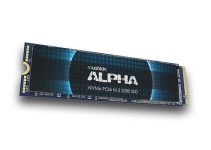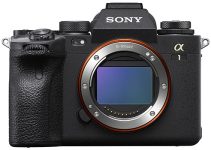Reviews dropped for the Sony Alpha 1! Already shaping up to be one of the top releases of 2021, the a1 generated a ton of questions. Is it good for video? Is the 8K usable? Are we going to have another R5 overheating situation? Is it as fast as they say it is? What are the caveats? There’s a lot of unpack with this camera.
Among the best technical camera reviewers on YouTube is Gerald Undone. He only got a couple of days to put together his initial review, so he focused on many of the more specific technical tests he does for all his reviews. Less of the fun, subjective stuff here. Still, this should answer a lot of questions for those interesting in purchasing an a1.
Overheating
Where else to start besides overheating? Gerald seems to think this is worthy of the first segment of his video and I agree. After the mess of the R5 with its various heat limitations in 8K and even some 4K modes, it left everyone worried when another camera with a similar form factor was pushing similar claims.
I assume you want to know the answer as to whether it overheats. Well, yea it does, but the key is that during testing, Gerald was able to record 8K for an hour 19 minutes before it needed a break. That sounds very usable for 8K. This was in a normal 73°F (23°C) room and with the camera set to “High” Auto Power Off Temp. in the menu.
These results were similar for both 200 Mb/s and 400 Mb/s as well as at 24p or 30p. The one thing that did shorten times was when charging via USB during recording. That dropped the time to 58 minutes. It likely signals that much of the heat is generated by the battery and power draw.
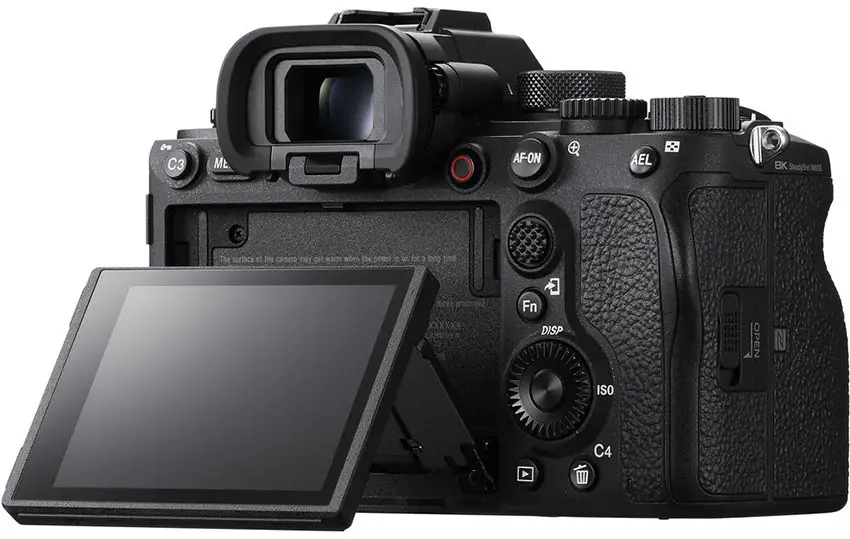
Image Credit: Sony
Recovery times were great. Shooting in 20-minute bursts with only a minute break between takes gave Gerald over 3 hours of shooting time – he had to stop, it didn’t actually cut him off. This means the camera should dissipate heat even when on and does a more accurate temperature check instead of using odd time limitations like the R5.
Basically, the 8K mode is very usable. Maybe not for a camera you want to sit and record for 3 hours – don’t do that in 8K – but your everyday short or video it should do just fine.
As implied earlier, the fact that charging caused the camera to overheat faster meant that most heat was likely coming from the battery itself. Gerald went and tested using an external power source and dummy battery and found that it does keep the camera cooler and extend runtimes. This got him over 3 hours of continuous shooting without issue before he simply ran out of time to keep the test going.
Keep in mind, environmental changes will impact real-world results. As for the other modes, such as 4K, the times were similar to the a7S III. This means the a1 is very good. Also, there is good news in that the a1 continues to use the NP-FZ100 battery pack we’ve seen a lot.
8K and 4K Resolution Test and Comparisons
Resolution is the next question for many reasons. First, there’s actually 8K, so how does that compare to the best 4K. There are also different binning/oversampling modes depending on specific settings, so we will want to know how each of those performs or if all are decent.
The key thing to know is that 8K is very good, looking so much better than something like the a7S III’s 4K modes. Makes sense. Next, is that you only get full downsampling in 4K when in Super 35mm mode, from a 5.8K image area. It relies on binning for full-frame 4K.
8K seriously blows the a7S III out of the water when it comes to resolution. The oversampled 5.8K mode in 4K actually looks sharper and with fewer artifacts than the a7S III too. However, there is some more noticeable noise. As for the binned full-frame 4K, it actually looks similar to the a7S III. It looks like moire and other issues were kept to a minimum even in this mode. Gerald actually calls the a1 an a7S III but with an 8K mode. That’s awesome.
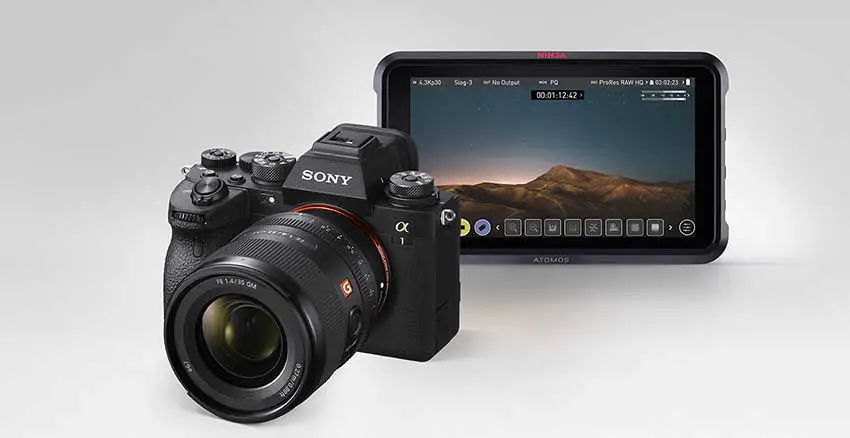
Image Credit: Atomos
Codecs and Raw Video
Regarding codecs and media, it’s all exactly the same as the a7S III. The only new modes are the 8K options, which are only 10-bit 4:2:0 in the XAVC HS (H.265) codec at 200 Mb/s and 400 Mb/s. You can actually record it to a V60 card, which is great. No need for the expensive CFexpress Type A just to get 8K.
There is a raw output via the full-size HDMI port at 4.3K resolution up to 60p. No support for that yet so we will have to wait and see. It’s likely going to be similar to the a7S III.
Low-Light and Noise Performance
Interestingly, for video the a1 appears to have better noise performance than the a7S III all the way up to ISO 12800—which is when the a7S III kicks into its high-sensitivity mode. The a1 is very good for noise and seems to make it more practical due to having lower sensitivities as it’s optimized for settings your everyday shooter will more likely encounter. Another test showed the a1 destroys the a7R IV in low-light video.
Sony has been making strides in color science and the a1 is unsurprisingly the best yet. The a7S III was a huge improvement and the a1 goes a step further. It seems to offer both great accuracy and a better shift at higher ISOs. Plus, it has S-Cinetone! This makes it match well with pro cinema cameras. The only annoying thing here is knowing that S-Cinetone could definitely have S-Cinetone via a firmware update.
Rolling Shutter, Dynamic Range, and Autofocus
Rolling shutter is a curious thing here. The a1 has a stacked sensor, which should help minimize rolling shutter. However, we also know that having a higher resolution can increase rolling shutter. It seems like the a1 is all improvements. Even in 8K the rolling shutter is well controlled. 4K even gives similar results to the a7S III.
Dynamic range is a surprise as it measured even more dynamic range than the a7S III. About 1/5 to 1/3 stop improvement to be exact. That’s not a ton but it’s not insignificant. It’s absolutely on par with many current cinema cameras.
Gerald doesn’t spend too much time on autofocus. Needless to say, Sony’s current AF tech is great and seems to perform very well here. Nothing weird in any of the new settings.
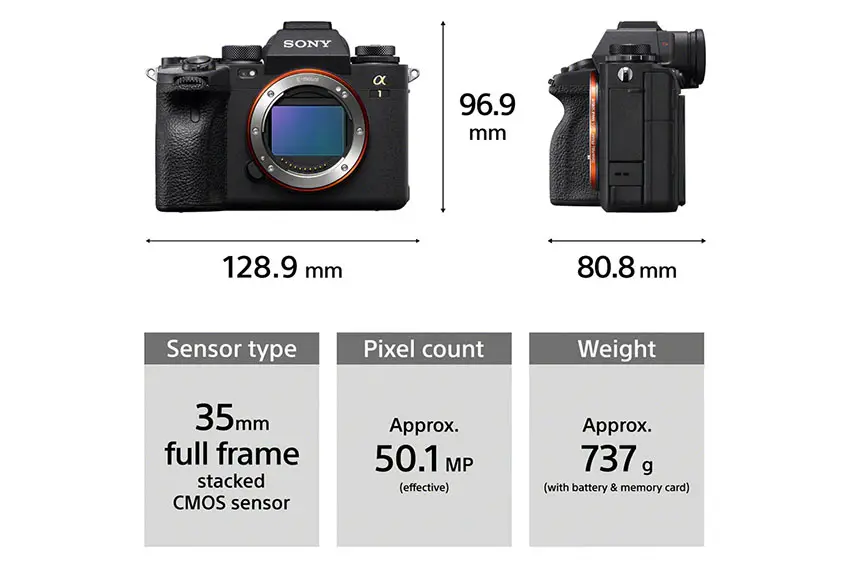
Image Credit: Sony
Physical Design
The body design is familiar. A couple differences are that there is an extra dial up on the top for shooting modes and speed plus the rear screen is back to being a tilt-only. No, it’s not fully articulating.
I’m torn on this. For video the fully articulating is superior, however, for stills, which is a major audience for the camera, the tilting screen is actually nice since everything stays in line. I’m honestly more upset it’s the same low-res 3” panel we’ve seen for years at this point. Give us a better screen like Canon and Nikon do!
Apparently, the internal audio is a bit different. I don’t think most people picking this up for video are going to rely on the internal mics, but you might want to listen to the test. Beyond that it is identical to the a7s III.
Final Thoughts
It looks like the a1 is going to be one of the top cameras from Sony and from the entire market. The only real sticking point is the price. At $6500 this is a tall ask when you can get both an a7R IV and a7S III for the same price, get similar functionality and have two bodies.
Considering the extras the $6500 price can be deserved, but… Sony could’ve made some more improvements that would’ve made it a no-brainer.
Are you considering the a1?
[source: Gerald Undone]
Order Links:
Disclaimer: As an Amazon Associate partner and participant in B&H and Adorama Affiliate programmes, we earn a small comission from each purchase made through the affiliate links listed above at no additional cost to you.


